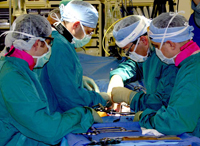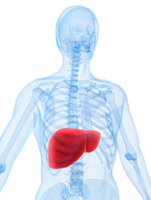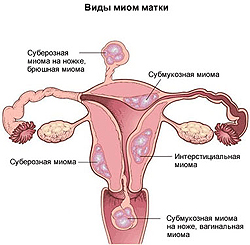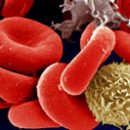What is liver cancer? What are the causes of liver cancer? How does the diagnosis and treatment of liver cancer? What is the forecast of the disease? Answers to these questions you will find in the article.
Content
Liver cancer
Malignant liver damage can be primary, that is
emanating from cells of hepatic structures, and secondary - growing in
Liver of secondary metastatic tumor nodes from cancer cells,
listed in the liver from other internal organs. Metastatic
liver tumors registered 20 times more often than primary because,
Through the liver, like through the filter, the blood passes from the internal
organs. The treatment of metastatic liver damage will be in detail
Teld in the section Treatment 4 Cancer Stages.
Primary liver cancer - relatively rare disease,
Component, according to various sources, from 0.2 to 3% of all cases of cancer. Among
Patients prevail male faces aged 50 to 65 years.
There are several forms of liver cancer, various by origin.
Allocate:
- hepatocellular carcinoma (hepatom,
Hepatic cell cancer, occurring, as seen from the name, from
liver parenchyma cells);
- cholangiocarcin (cell tumor
epithelium of bile ducts that make up 5-30% of all primary
malignant liver tumors);
- Angiosarcoma liver
(malignant hemangioendothelioma liver - one of the most
malignant liver tumors growing from endothelium vessels);
- hepatoblast (malignant liver tumor of children's age).
Causes of liver cancer
- The development of liver cancer contributes to chronic viral hepatitis
(Hepatitis B, hepatitis C). The risk of haze and cell cancer
Virus carriers increase 200 times;
- Cirrhosis of the liver;
- Hemochromatosis (excessive content in iron organism);
- Parasitic diseases (opistorhoz, schistosomtosis and others);
- Syphilis;
- Chronic alcoholism;
- Exposure of carcinogens (polychlorinated diphenyls chlorinated
Hydrocarbon solvents, for example, carbon tetrachloride,
Nitrosamines, organic chlorine-containing pesticides, aflatoxins,
contained in food).
Symptoms of liver cancer
In the initial stages of cancer there are general ailments, various
Dyspepsic disorders (loss of appetite, nausea, sometimes vomiting),
feeling of gravity in the right hypochondrium, stupid nunning pain, raising
Temperature. There are general weakness, weight loss, anemia (anemia).
With the development of the disease can be revealed to increase the liver, liver
can perform from under the rib arc, can acquire a rivet
Density, bugberry. When taking a liver area can
Detect tumor education. Gradually increases jaundice.
Diagnosis of liver cancer
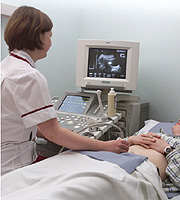
Initially, the assumption of the lesion of the liver arises on the basis of complaints and appearance of the patient.
Tool methods
Ultrasound (ultrasound research) is of great importance in
Diagnosis of tumor liver damage due to wide availability
and sufficient accuracy. Using ultrasound, you can reveal the nodal
Education in the liver, according to special characteristics to differentiate
their benign and malignant.
CT (X-ray computed tomography), MRI (magnetic resonance
Tomography, nuclear magnetic resonance imaging) are used for
liver cancer diagnosis if the diagnosis fails to put more than
Simple methods or to clarify the prevalence of the process.
Additional data can be obtained with radioisotope liver scanning.
Laboratory methods
Determination of blood indicators, indirectly indicative in favor of liver damage.
This is:
- Biochemical blood test in which can be detected
Raising bilirubin levels, decrease in protein level, increase
content of hepatic enzymes;
- Blood test to oncomarkers
(indicators, increasing the level of which in the blood says about
The body of one or another tumor).
It should be remembered that the identification of any, even malignant
Diseases at an early stage improve the forecast of the upcoming treatment.
Treatment of liver cancer
The main method for the treatment of liver cancer - surgical.
In the case of hepatic cancer, a liver segment with a tumor or a lobe share (hemigepatectomy) is removed.
In case of cholangicarcinoma, in some cases, the removal of the duct with a tumor with the subsequent imposition of anastomosis (coolen).
During single nodes, their ablation is possible (radio frequency ablation,
Chemoabulation, cryoablation) - treatment method when the liver node
A special needle is introduced and under the influence of various mechanisms node
collapsed.
Intravascular chemotherapy is performed, while through
The blood vessel to the tumor node is supplied by a thin catheter, in
which is introduced by the chemotherapy, thus the action directly
on the tumor is more intense, but the negative effect of the chemotherapy on
The body is less.
The choice of treatment method depends on the type of tumor, the state of the body and
other parameters, determine which is possible only with careful
Survey of the patient.
Treatment of metastatic liver damage will be described in detail in the section Treatment 4 Cancer Stages.
For primary liver tumors, local invasive growth is characterized,
Especially often the tumor germinates in a diaphragm. Remote metastases
Most often found in lungs (up to 45% of cases).
Prognosis and prevention of liver cancer
The course of liver cancer depends on the type of tumor, but usually stormy and
without treatment after a few months leads to the death of the patient. At
Operable tumors The average life expectancy of patients after
Operations is 3 years. 5-year survival - about 20%.
Since the development of liver cancer contributes to chronic viral
Hepatitis B and Viro Some parasitic diseases,
Carcinogenic effect on the liver of industrial poisons, based on
Primary prevention lies the prevention of these diseases and protection
ambient. Secondary prophylaxis lies in the early detection
and timely treatment of chronic liver diseases.
Of particular importance is the fight against alcoholism, as cirrhosis of the liver
(especially the large form) is detected by about 60-90% of patients with
hepatoma.



